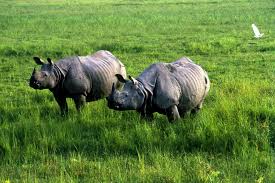Government unveils third National Wildlife Action Plan for 2017-2031
The Union Ministry of Environment, Forests and Climate Change (MoEFCC) has unveiled third National Wildlife Action Plan for 2017-2031 to chalk out future road map for wildlife conservation.
The plan was unveiled by Environment Minister Dr Harsh Vardhan on inaugural day of Global Wildlife Programme (GWP) conference. It is third action plan after first released in 1983 to 2001 and second from 2002 to 2016, that had protected area-centric approach to wildlife conservation.
3rd National Wildlife Action Plan
The plan was initiated in February 2016 by MoEFCC. It was drafted by a 12-member committee chaired by JC Kala, a former secretary to the ministry. The key focus areas of this plan includes integration of climate change into wildlife planning, conservation of coastal and marine ecosystem, mitigation of human-wildlife conflict, focus on wildlife health among others.
Climate Change impact: It is first wildlife action plan to recognise concerns related to climate change impact on wildlife. It has stressed on integrating actions for its mitigation and adaptation into wildlife management planning processes.
It recommended assisted migration of wildlife and anticipatory planting along ecological gradients, as climate change may result in die-offs of certain tree species that are unable to adapt to newer environmental conditions.
Approach: It adopts landscape approach in conservation of all wildlife – uncultivated flora and fauna that have an ecological value to ecosystem and to mankind irrespective of where they occur. It gives special emphasis to recovery to threatened species of wildlife while conserving their habitats which include inland aquatic, coastal and marine ecosystems.
Human-animal conflict concerns: It addresses rising human-animal conflict owing to shrinkage, fragmentation and deterioration of habitats generating animosity against wild animals and protected areas.
People’s support: It underscores increasing need for people’s support for conservation of wildlife. It recommends eco-development, education, innovation, training, extension, and conservation awareness and outreach programs.
Participation of private sector: It underlines increased role of private sector in wildlife conservation. It lays down that Government will ensure that adequate and sustained funding including Corporate Social Responsibility (CSR) funds are made available for implementation of plan.
Month: Current Affairs - October, 2017


